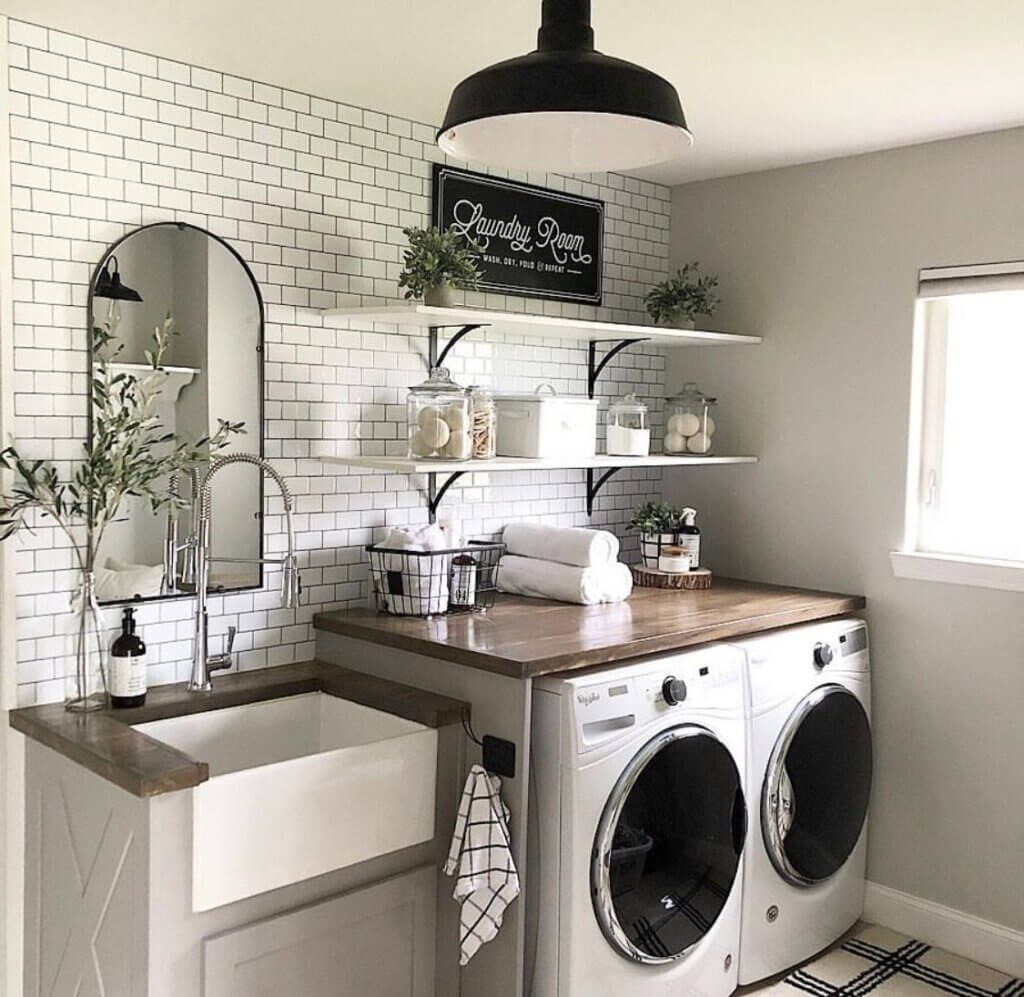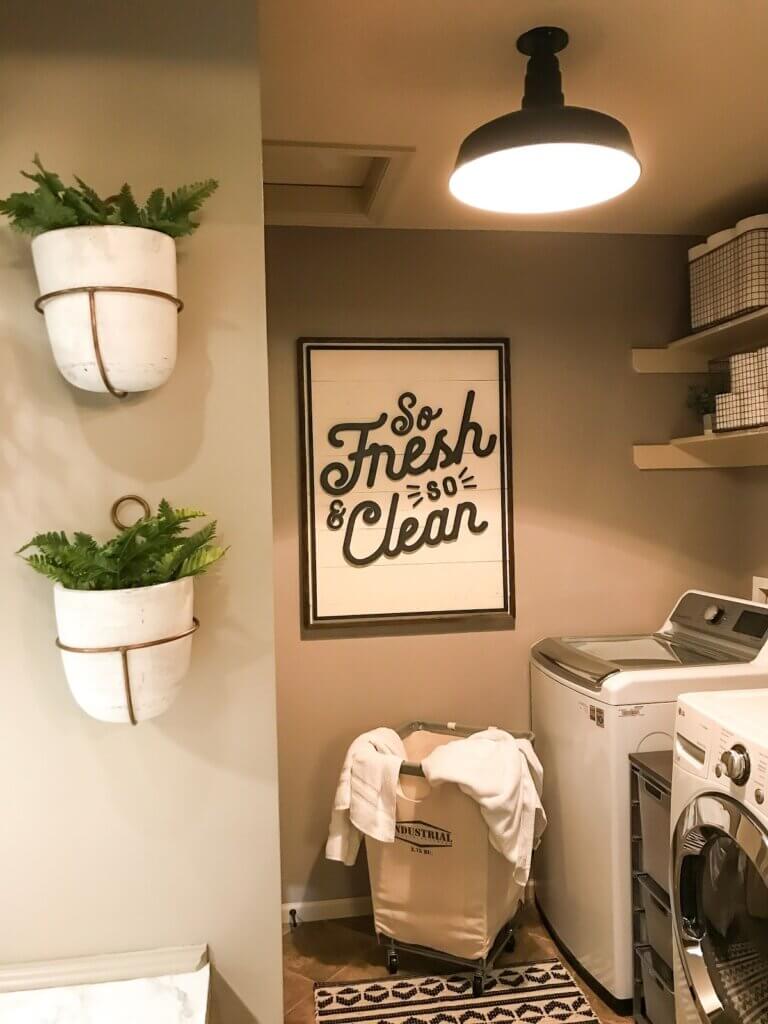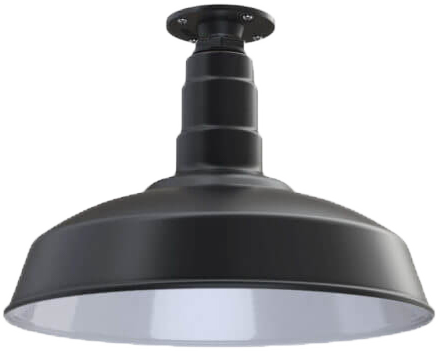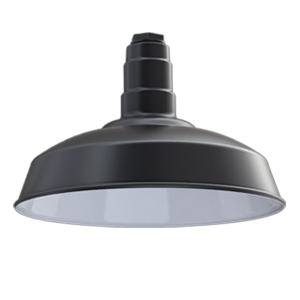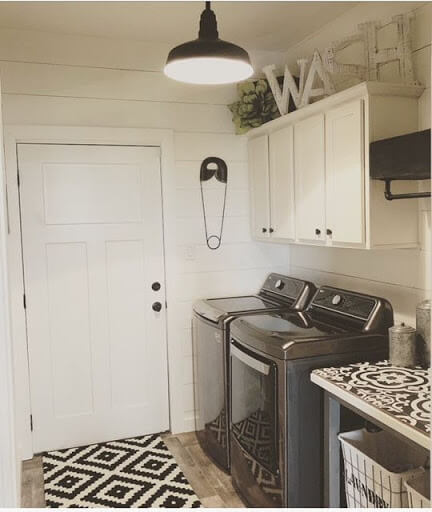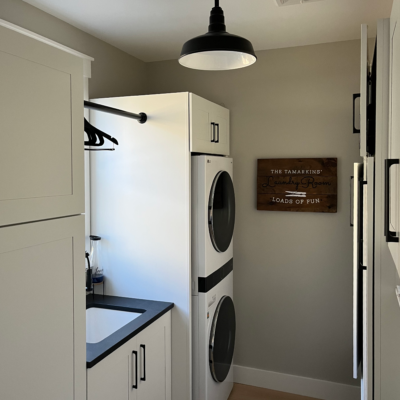Your cart is currently empty!
Airing Out: Lighting for the Laundry Room
The modern laundry room is a strange place. Most designs of homes these days seem to emphasize the glamour and freshness of open-plan design. Yet, for some reason, the laundry room of many homes always feels like a dark and dingy afterthought.
Laundry rooms are supposed to be open themselves. After all, they’re dealing with a lot more humidity, higher temperatures, and air-borne fibers than any other room in the house. Yet, we still seem to be determined to put the one thing in the home that is most likely to cause a house fire in the smallest and most cramped room we can find.
All of this seems doubly strange when you consider how vital laundry is. Just ask any housewife of any generation, and they’ll tell you how much laundry dominates their lives. In families especially, the tidal wave of laundry that needs to be kept up with is unforgiving.
If there’s one aspect of the laundry room that’s seemingly left to the last minute – then it’s the lighting. Lighting for laundry rooms is notoriously bad and rarely makes it easy to see what you’re trying to do. Folding becomes fiddly, and trying to see the little line on the detergent bottle cap is near impossible.
Thankfully, we at Steel Lighting Co. are well aware of the failings of modern laundry rooms. To that end, we’ve come up with a neat guide on how to make the most of your laundry room and even salvage a bad one with some careful lighting.
So, without further ado, let’s get spinning!
Separate Your Colors
The reality of a lot of laundry room lighting is that, quite simply, the type of light is wrong from the get-go.
Ideally, you want to see as much as you can, making it easier to track lost socks and funny crease lines. To do that, you need the best form of light available – daylight. Sunlight during midday is the brightest and “bluest” light we have access to. This form of light allows other colors to be perceived as being as close as they can be to reality. This kind of thing is pretty essential for figuring out the nitty-gritty of proper laundry technique, so it’s worth it to try and replicate that as much as possible.
Naturally, the way to get access to the sunlight is by having a window. So, if you’re still designing your house and you’re not sure where to put that laundry room in the plans, then take it from us – the laundry room needs a window badly.
Short of that, another technique for maximizing natural light is to introduce a mirror to the room. Mirrors reflect light and brighten rooms naturally as a result.
Large Loads of Light
Ok, so you don’t have a window in your laundry room, and the idea of putting one in there is not feasible. That’s fine; there are other ways to make life easier. If you’re relying on fixed light sources as a way to brighten your laundry room, then we have a good tip – change your bulbs.
Ideally, you want bulbs that can mimic daylight as much as possible. While that might sound obvious yet somewhat confusing, then don’t worry because the solution to this is far easier than it sounds.
As mentioned before, daylight is a “bluer” form of light than conventional electric sources. The reason for this comes down to the idea of color temperature. Color temperature simply refers to the measure of the light intensity of a light source. The brighter and more brilliant the source, the higher the temperature.
Higher temperature light sources are often seen as brighter and “bluer,” where the light can show colors as they seem and without any tinge in the shade. On the other hand, lower temperature light was perceived as “warmer” and more orange in color.
Ideally, you want a higher temperature light for task-heavy spaces, like kitchens and laundry rooms. Conversely, lower temperature lighting closely mimics dusk-like conditions, making it more appropriate for bedrooms and living rooms where the goal is to relax.
The easiest way to mimic daylight is by using a Light Emitting Diode or LED bulb. Unlike conventional filament bulbs, LED bulbs emit a much higher temperature of light and can easily mimic daylight conditions. In addition, LED bulbs are less costly to run and have a nearly non-existent chance of creating a dangerous environment from exploding or shorting.
We offer LED bulbs from our shop with two options for those looking for the lower temp, “warm” light, and those looking for the higher temp, “bluer” light.
Task Lighting
Fundamentally, the laundry room is not a place to relax. Instead, it’s a place to get a specific yet vital task done that impacts us daily.
To get that task done, you need the light that is suited to shine a light down on your work area and make it easy to see the details of what you’re doing. For this, you need task lighting.
In lighting design, three distinct layers of light are applied to any room. These are:
Ambient Lighting, which provides a base layer of visible light to any area.
Accent Lighting, which provides light meant to enhance a space thematically or artistically.
Task Lighting is a focused form of lighting designed to simplify complex tasks by providing a better vision of the job.
Laundry rooms, where folding and stacking clothing is a vital skill, need a focused light source. At Steel Lighting Co., we’d highly recommend a wall-mounted fixture, such as the Topanga, to create a cone of bright light above your workstation, making it far easier to concentrate on the issue at hand.
Combining that light with an ambient light source, such as a ceiling light like our Carson fixture, can create an evenly lit space that appeals to those that want to make sure they never miss a sock in the race against dirty laundry!
If you’d like to know more about how steel lighting can improve your bathroom experience, then contact our team at Steel Lighting Co., our friendly group of experts would be more than happy to give some advice and recommendations on what kind of steel barn light can best suit your needs.
